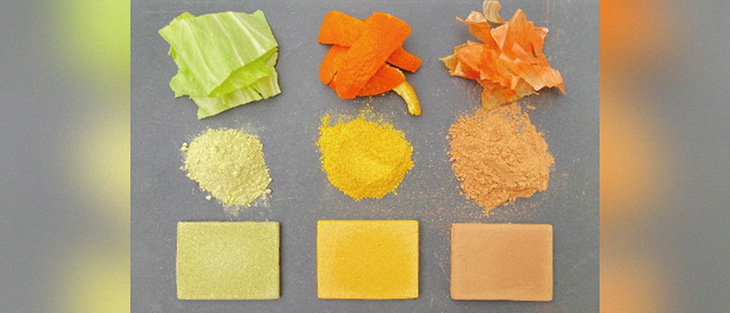
The Japanese are known for their work ethic, incredible imagination and smart innovations. And while most people don’t think consider food scraps and waste as becoming something amazing, researchers from Tokyo have actually done just that!
In order to reduce food waste, they’ve developed a new method that recycles left over vegetable scraps and fruit into strong and sturdy materials for building and construction.
The world is in a crisis when it comes to industrial and household food waste, which amounts to hundreds of billions of pounder annually. And a huge portion of that is comprised of edible scraps, like vegetable and fruit peels.
Considering all the tons of food waste is both unsustainable, environmentally hurtful and very costly, the Japanese researchers have looked into new ways to convert these biological and organic materials into highly useful commodities.
Senior author of the study, Yuya Sakai, shared, “Our goal was to use seaweed and common food scraps to construct materials that were at least as strong as concrete.”
Sakai went on to say, “But since we were using edible food waste, we were also interested in determining whether the recycling process impacted the flavor of the original materials.”
In order to create their product, they used the “heat pressing” concept, one they borrowed from the typical ones used when making construction materials out of wood powder. Except for the Japanese project, they used ‘vacuum-dried, pulverized food scraps’ made up of either cabbage leaves, seaweed, and even orange, pumpkin, banana and even onion peels that made into constituent powders.
The technique used to process the material involves mixing food powder with seasonings and water, afterwards, the mixture is pressed into a mold at very high temperature. The research team tested the product outcome’s bending strength, as well as monitoring the smell, taste and appearance.
Senior collaborator on the project, Kota Machida, “With the exception of the specimen derived from pumpkin, all of the materials exceeded our bending strength target.”
Machida added, “We also found that Chinese cabbage leaves, which produced a material over three times stronger than concrete, could be mixed with the weaker pumpkin-based material to provide effective reinforcement.”
These new and sturdy materials managed to keep their edible nature, but when they added salt and sugar, the researchers also managed to improve the taste without lessening it’s strength.
These incredibly strong and long-lasting products even resisted insects, fungi, and rot, and furthermore, there were no discernable changes in their appearance or their taste when they were exposed to air for at least four months.
Since food waste is both an environmental concern and financial burden across the globe, it’s become extremely critical that the world finds way to recycle food scraps both adequately and positively.
Considering how these materials are prepared and made strong enough to use for construction work and projects, while keeping their edible taste and nature, means that the world is filled with tons of possibilities. Not only does this new technology help manage food waste, but it has created ingenious ways to help save the world in the coming future.
What are your thoughts? Please comment below and share this news!
True Activist / Report a typo


